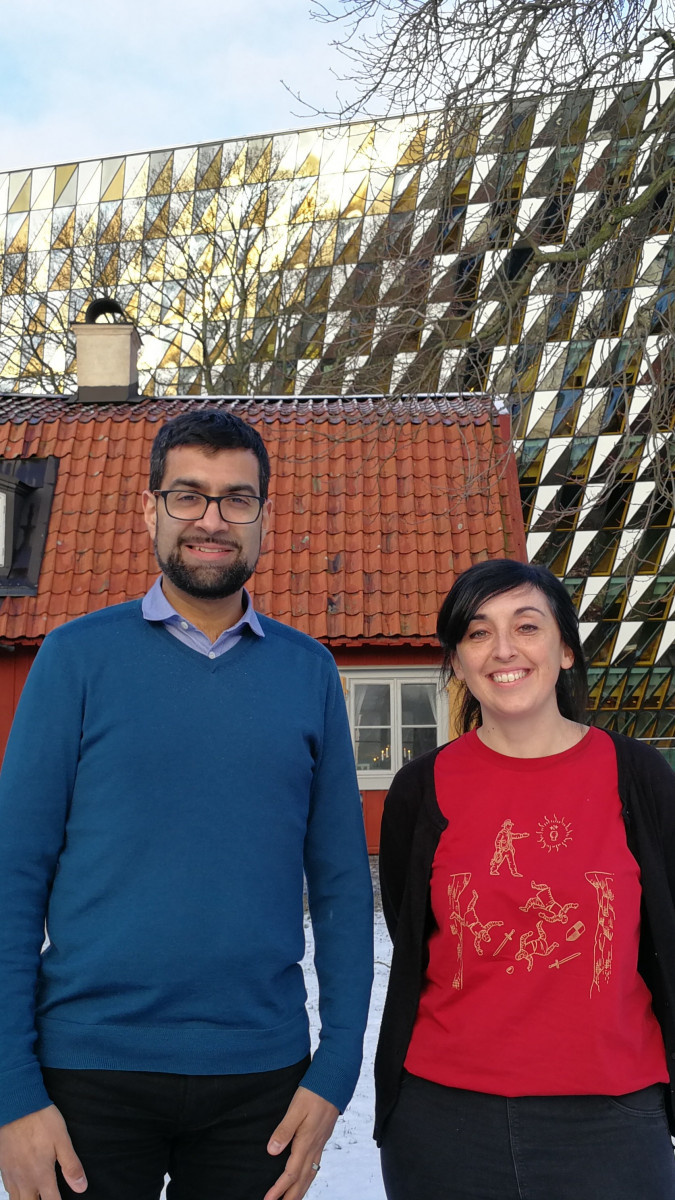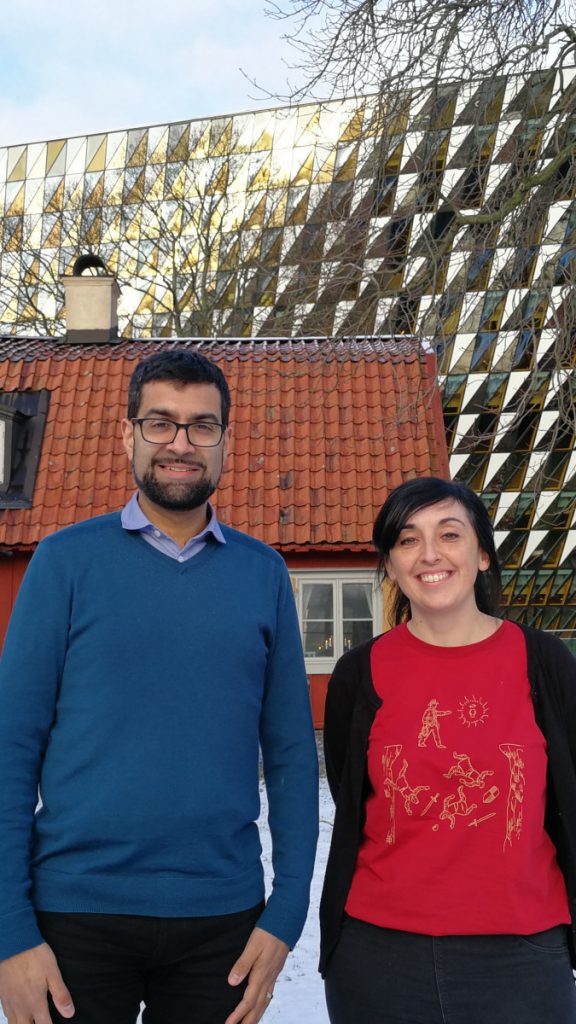Altered Oligodendrocyte Diversity Contributes to Multiple Sclerosis, Study Suggests

Gonçalo Castelo-Branco och Eneritz Agirre. Photo: David van Bruggen
Subpopulations of oligodendrocytes — cells that produce the myelin sheath that protects nerve fibers — are altered in patients with multiple sclerosis (MS), a study shows. These findings suggest that oligodendrocyte diversity and the different functions of these subpopulations might have a greater role in the disease than previously thought.
The research article, “Altered human oligodendrocyte heterogeneity in multiple sclerosis,” was published in the journal Nature.
The severity of MS varies greatly, and the patient’s disability level does not correlate well with the degree of myelin loss. This suggests that other factors contribute to MS severity.
One such factor may be that oligodendrocytes are heterogeneous — diverse in makeup and function. For example, oligodendrocytes in mouse spinal cords are known to naturally produce longer myelin sheaths than oligodendrocytes in the mouse brain.
Additionally, individual oligodendrocytes have been shown to have different molecular makeups. However, the extent of human oligodendrocyte diversity and its possible contribution to MS pathology remains unknown.
Researchers from the Karolinska Institutet and the MRC Centre for Regenerative Medicine studied the differences of individual human oligodendrocytes from healthy and MS brains to assess their diversity. Specifically, the team examined oligodendrocytes from the white matter areas of post-mortem human brains both from MS and non-MS patients.
The team examined the RNA content — the messenger molecule carrying instructions from DNA for the production of proteins — from individual oligodendrocytes.

Gonçalo Castelo-Branco and Eneritz Agirre. Photo: David van Bruggen
Researchers identified groups of RNA molecules that defined features of oligodendrocytes from healthy human white matter. Some of these groups match those that defined oligodendrocytes in healthy mice.
Strikingly, some of these RNA molecules in healthy brains were under-represented in oligodendrocytes from MS brains, whereas others were more prevalent.
“We found that oligodendrocytes are a diverse population of cells and that different types are likely to have different functions in the brain,” Charles ffrench-Constant, PhD, the study’s co-lead author, said in a Karolinska Institutet news release written by Katarina Sternudd.
These differences in oligodendrocyte RNA content may indicate different functional states of oligodendrocytes in MS lesions. “The proportions of different resident oligodendrocytes in the lesions are changed, along with their properties, suggesting that they might have important roles in MS,” said Eneritz Agirre, PhD, a study co-author.
Furthermore, the researchers believe that this altered diversity in oligodendrocytes in MS may be important to understand disease progression and develop therapeutic approaches.
“Understanding which types of oligodendrocytes are most beneficial in repairing myelin will be crucial for maximizing the chances of developing much-needed treatments for MS,” said Anna Williams, PhD, study co-lead author.
The team concluded that the changes in different oligodendrocyte subpopulations in MS suggest “a more complex role of these cells in the pathology of the disease, but also in regeneration of new cells,” said Gonçalo Castelo-Branco, PhD, another study co-lead author.






